Michi-no-Eki (roadside stations) Tatara Shimanami Park includes the Fureai Yatai Ichi, which sells locally sourced vegetables and citruses.
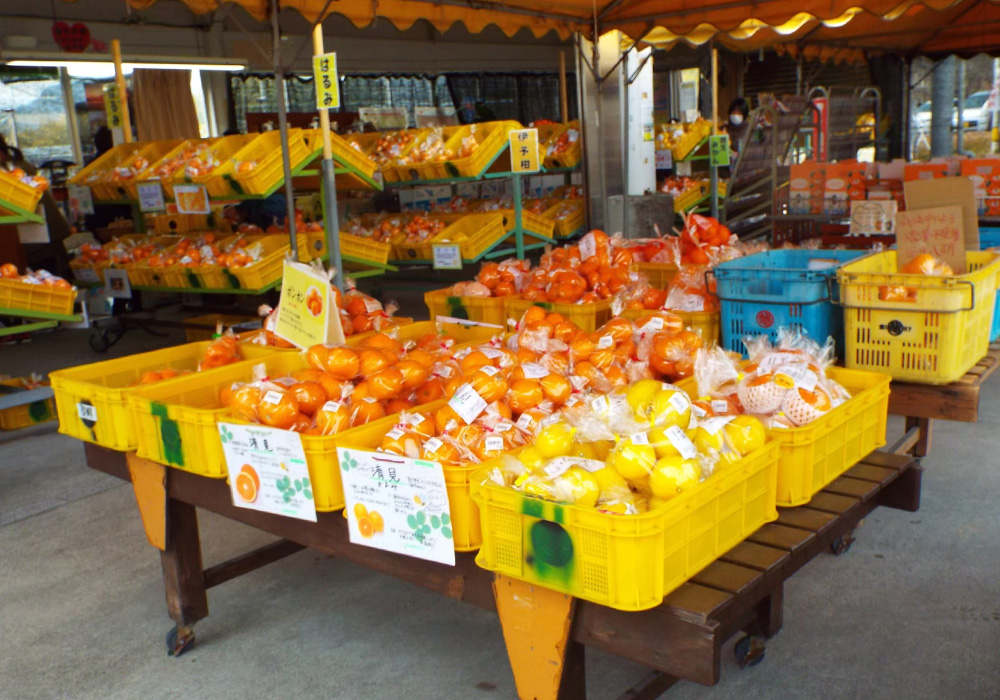
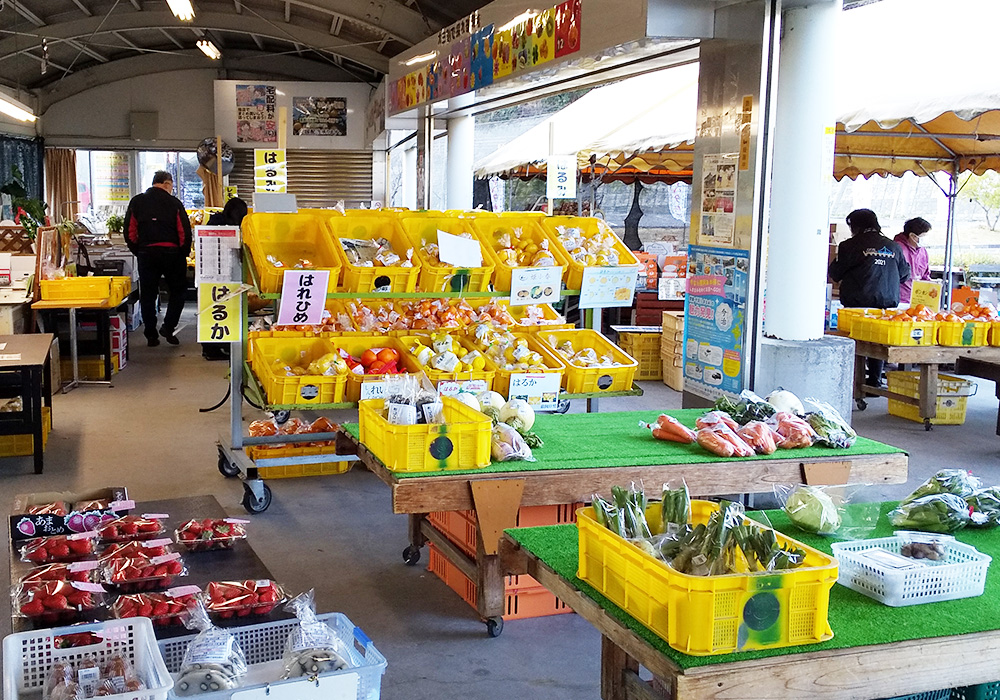
The citruses differ by the season, so you can enjoy different flavors throughout the year.
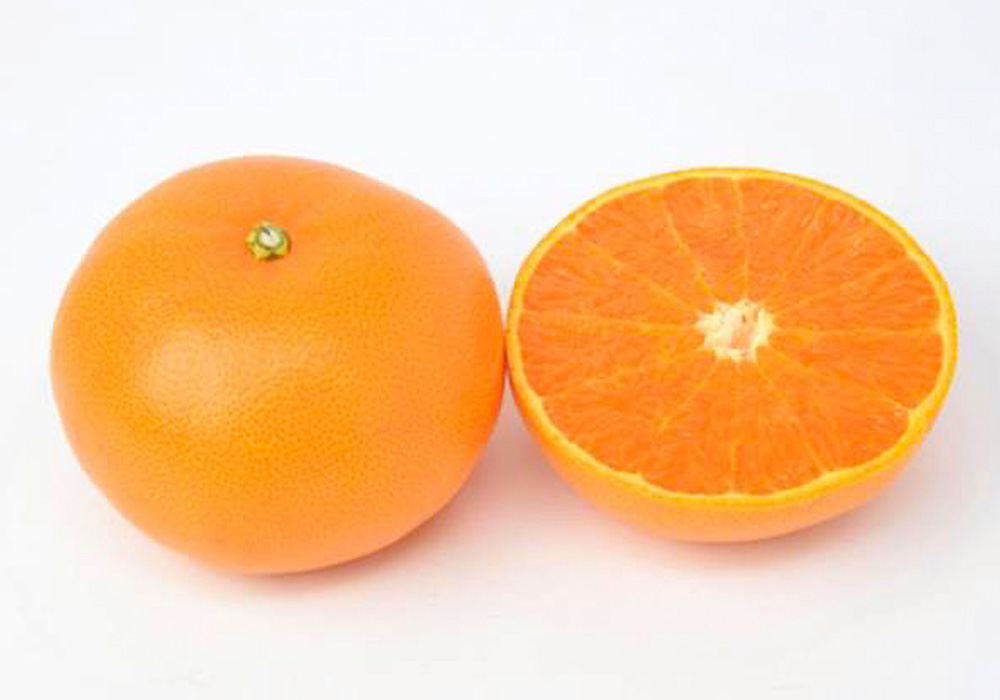
Ehime Kashi No. 28
Season: December
Nanko × Ponkan
An original cultivar of Ehime prefecture. Beni Madonna is a registered trademark of ZEN-NOH Ehime. It is rich and juicy with a pleasant aroma. The flesh is jiggly like jelly.

Harehime
Season: December
(Kiyomi × Osceola orange) × Miyagawa Wase
This combines the sweetness of mikans with the aroma of oranges. The unique flavor of harehime is popular.

Ariake
Season: December through January
Navel orange × Clementine
A sweet citrus with comparatively little sourness. Enjoy a unique flavor that resembles a navel orange.

Amaka
Season: January
Kiyomi × Encore
This is a rich citrus that is sweet with a mild sourness and a pleasant aroma.

Nishinokaori
Season: January through February
Kiyomi × Torobita orange
Juicy with a refreshing aroma. Refreshing sweetness and little sourness.

Amakusa
Season: January through February
(Kiyomi × Okitsuwase mikan) × Page orange
Similar to an orange, with little sourness, strong sweetness, and plenty of juice.

Ponkan
Season: January through February
Known for their sweet and sour aroma, ponkan are from the Suntara region in India. They have a strong sweetness and rich flavor. They have seeds, but ponkan are easy to peel and eat.
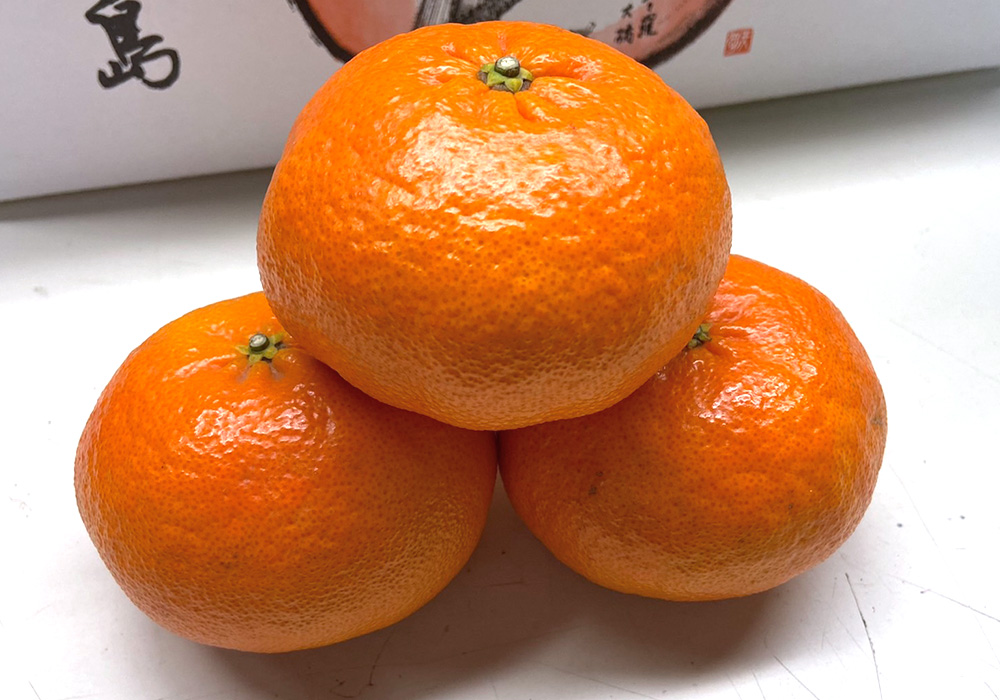
Kanpei
Season: February
Nishinokaori × Ponkan
Thin skin with sweet, dense flesh. Refreshing and jellylike, it has a satisfying texture.

Himekoharu
Season: February through March
Kiyomi × Ogonkan
A very sweet orange with a different appearance. Rich, refreshing, and juicy.

Harumi
Season: February through March
Kiyomi × Ponkan
Mildly sweet with a refreshing flavor. Large flesh with jellylike elasticity.

Iyokan
Season: February through March
A type of tangor
It is a large fruit that is juicy, sweet, and has a pleasant aroma.

Navel orange
Season: February through March
Comes from the United States.
It is characterized by the dimple that looks like a belly button. It is rich with strong sweetness and sourness. It has ample juice and is perfect to eat in slices ♪

Setoka
Season: February through March
Kiyomi × Encore × Murcott
It is juicy and sweet. You can enjoy the orange-like rich flavor. We recommend eating it with a smile cut.

Haruka
Season: February through March
A chance seedling resulting from the hyuganatsu.
It looks like a lemon, but it has an unexpectedly refined sweetness. It is a refreshing, gentle citrus with no sourness.

Shunpo
Season: February through March
Kiyomi × Suisho-buntan
This citrus is sweet and sour, resembling an orange.
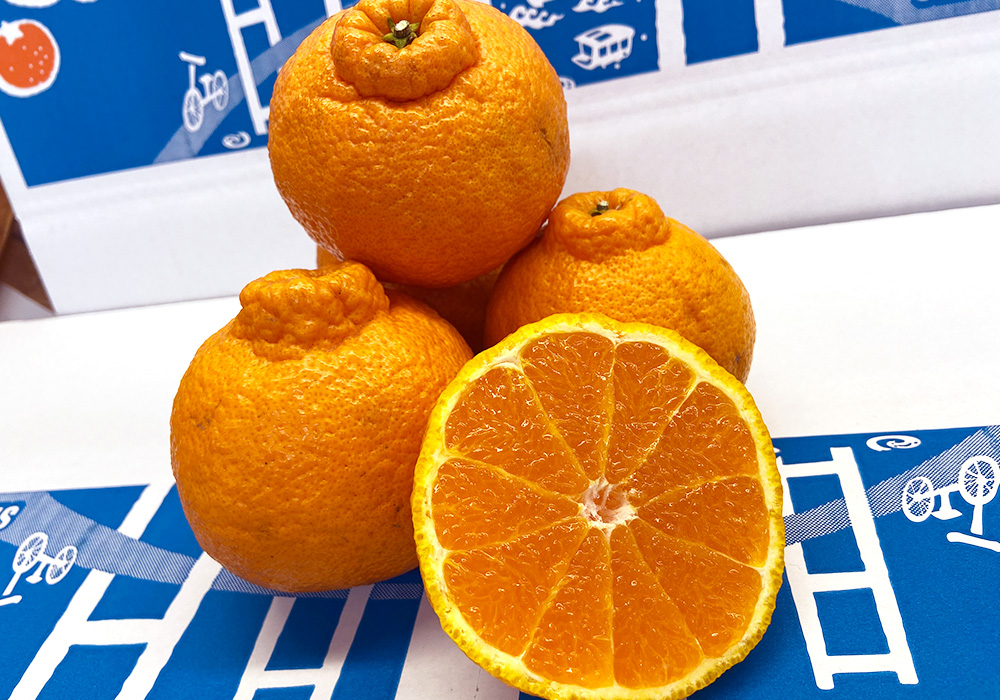
Shiranui
Season: March through April
Kiyomi orange × Nakano No. 3 ponkan
It has a high sugar content and a good balance of sweetness and sourness.

Sweet and rich locally produced strawberries

2022 © shimanami
